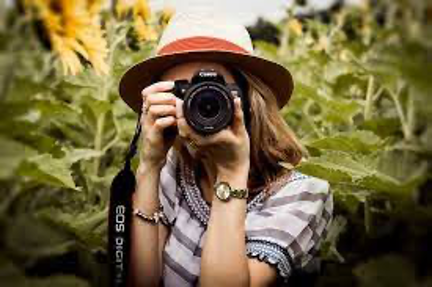
Photography does not have to be a traumatic experience. You only need a little guidance to get started, and the best place to start is with the fundamental concepts used to create a great photograph.
While most photographers focus on one or two types of photography, experimenting with different styles can help to broaden your skillset. Technical and creative abilities are frequently required across several photography specializations. This means that as you get better in one area, you can pick up valuable lessons and skills that will help you turn into an improved photographer in other areas.
You can lay a solid foundation for your photography career by learning and practicing the seven different types of photography listed below.
1. Photographing Portraits
Portrait photography, also known as portraiture, is one of the most popular photography styles. It aims to capture an individual's or group's personality and mood. Photographs can be candid or posed, full-body or close-ups. In either case, the subject's face and eyes are usually in sharp focus. The use of lighting and a backdrop can help to convey tone and emotion. The best portrait photographers make their clients feel completely at ease, allowing their expressions to be natural and relaxed.
2.Photographic journalism
Photojournalism uses photographs to tell the story of a newsworthy (or even historical) event or scene. Photojournalism should be as objective and honest as possible, and capturing candid moments as they happen is more important than getting perfect shots. Photojournalists typically attend planned events in the hopes of capturing unplanned, unscripted moments. Their work is frequently featured in magazines and newspapers.
3. Fashion Photography
Fashion photography promotes and glamorizes fashion clothing, shoes, and accessories to make them more appealing to customers. It is frequently published in magazines and on the internet. People may prefer this niche over other types of photography because it allows them to be highly creative in creating eye-catching and appealing photographs. Fashion photographers take a lot of full-body shots and work in various settings, including fashion shows, studios with complete lighting setups, city streets, and open fields.
4. Sports Photography
Sports photography can capture the passion, drama, and emotion that fuels sporting events by capturing athletes, coaches, and even fans at the ideal moment. Sports photographers must aim and take shots quickly to keep up with the action, and it is best practice to use a higher ISO to shoot at a quicker shutter speed. Long, heavy lenses are also commonly used by sports photographers to zoom in on the action. In this competitive genre, interesting angles can help your work stand out.
5. Photography of Still Life
As the name implies, still-life photography focuses on inanimate objects, whether natural or artificial. Still-life photography can be either artistic or commercial. It is frequently used in stock photography and product advertising. (Consider product images in catalogs, magazines, and billboards.) Object selection, arrangement, and lighting are critical for still-life photographers.
6. Editorial Photography
Editorial photography is typically used to illustrate a story or article for a magazine or newspaper. The subject of editorial photography can vary greatly and depends entirely on the accompanying text topic. In general, for editorial photography, you'll want to get shots that can be used in various layouts, such as horizontal and vertical compositions. Working closely with writers and art directors is likely when working in editorial photography, and indicating good communiqué skills and professionalism will help you succeed.
7. Photographing Architecture
Architectural photography focuses on the interior and exterior design of buildings and structures. This genre includes many forms, from warehouses to city bridges to old country barns. Often, the photograph highlights the most aesthetically pleasing parts of the structure, such as a particular beam or archway. Colors and materials that are visually appealing can also be highlighted. Lighting can be tricky in architectural photography, and photographers who shoot exteriors must understand working with natural light. Architects, leasing companies, and building investors can benefit from architectural photography.
1. Camera
If you purchase a dedicated camera (rather than a phone), choose one with interchangeable lenses so you can experiment with different types of photography more easily. Read reviews, but don't become obsessed with them because everything available today is nearly as good as its competition. Find a good deal and then move on.
2. Lenses
This is where it matters. Begin with a standard zoom lens, such as a 24-70mm or 18-55mm, for everyday photography. Choose a prime lens (one that does not zoom) at 35mm, 50mm, or 85mm for portrait photography. Choose a telephoto lens for sports photography. Invest in a dedicated macro lens for macro photography. And so forth. Lenses are more important than any other piece of Equipment because they limit the photos you can take in the original.
3. Software for post-processing.
Editing your photographs in some ways is one of the best ways to get better. It's always nice to begin with the software already installed on your computer or software included with your camera. However, in the long run, a dedicated program will perform better. There are numerous options. Whatever you choose, stick with it for a while, and you'll get the hang of it.
If the idea behind a photograph is weak, using the proper camera settings will not improve it. At the same time, camera settings are still necessary. Every technical decision is, in some ways, a disguised artistic choice. These settings are worthwhile to learn. When you understand how camera settings work, your understanding of photography will improve tenfold.
